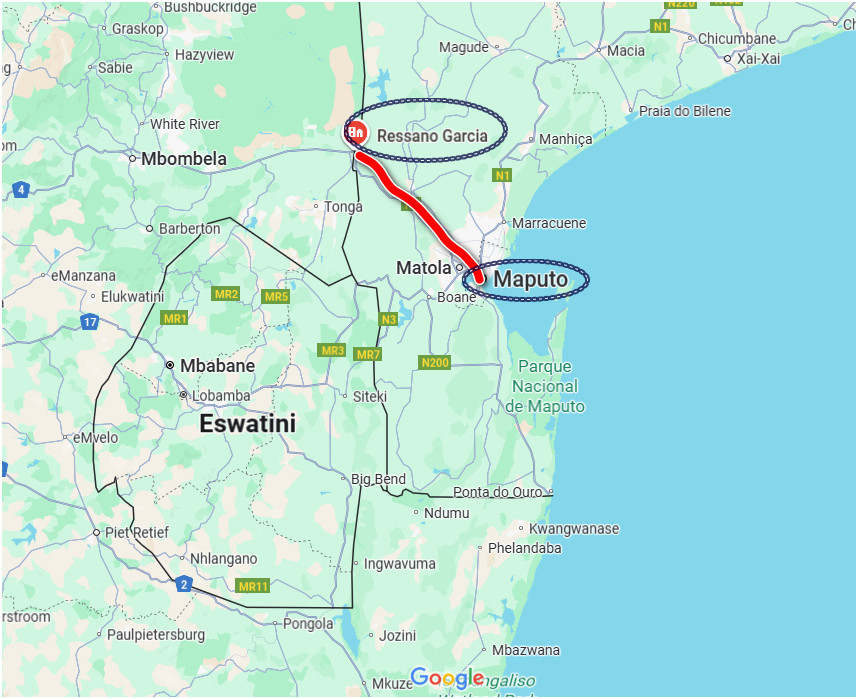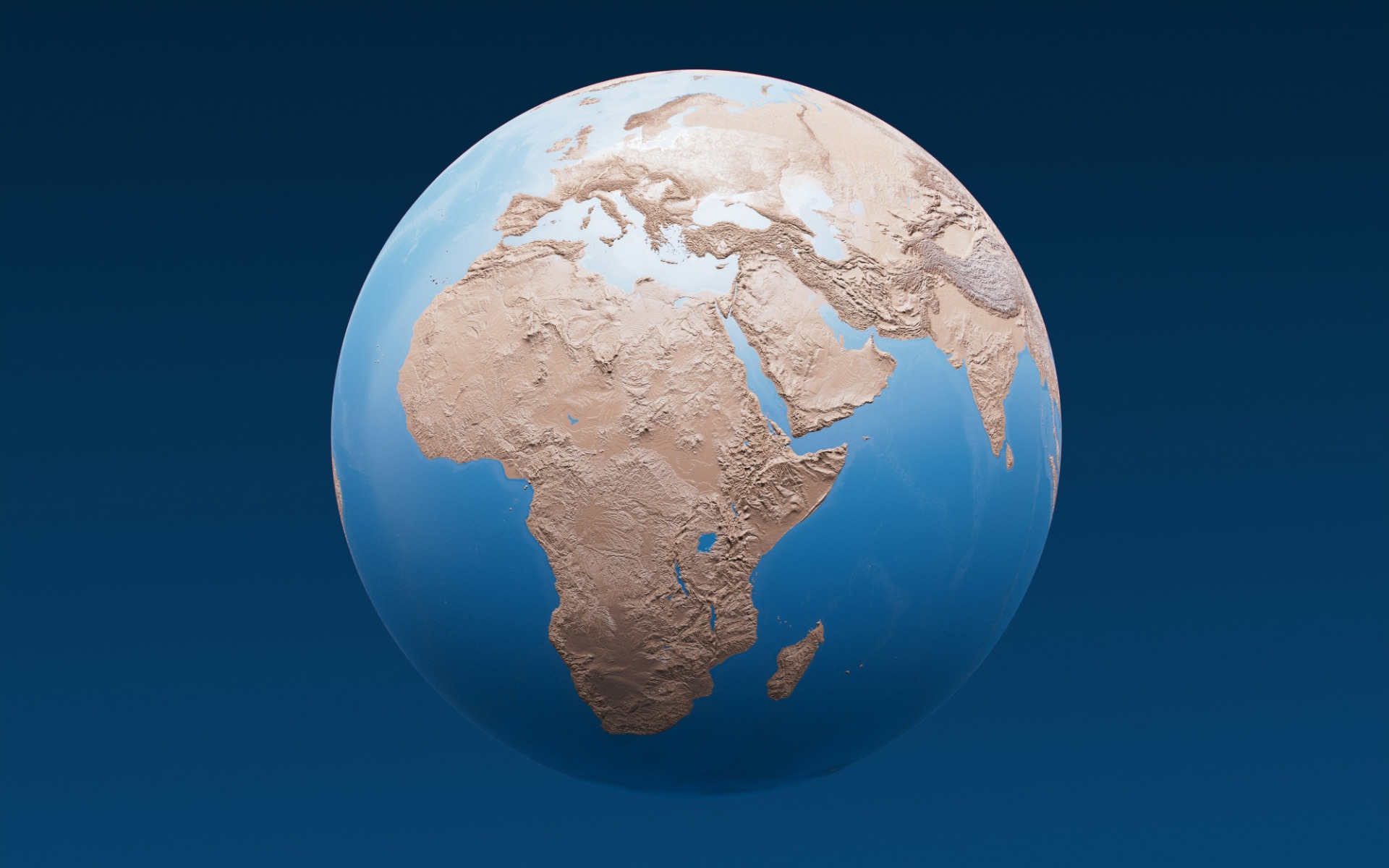
The Beira Corridor
The Gateway of Central Mozambique & landlocked countries (Zimbabwe, Malawi, Zambia).
The Beira Corridor is a key trade route connecting the Port of Beira to landlocked countries like Zimbabwe, Malawi, and Zambia. It enables the efficient transport of minerals, agricultural goods, and consumer products, making Mozambique a strategic gateway to global markets.
Beyond roads and railways, the corridor fosters regional cooperation, economic integration, and investment in logistics and industry. While challenges like infrastructure limitations, security risks, and customs delays exist, ongoing upgrades and port expansions are enhancing efficiency and reliability.
Historical Background – From Colonial Trade Route to Regional Lifeline
The Beira Corridor has its origins in the colonial era, when the Port of Beira served as a key outlet for goods from inland territories such as Zimbabwe and Malawi. Railways and roads were built to transport minerals, agricultural produce, and imports, establishing the corridor as a critical trade artery.
During Mozambique's civil war (1977–1992), much of the infrastructure was damaged or neglected, disrupting trade and limiting access for landlocked neighbors. Exports and imports were forced to reroute through alternative ports, reducing the corridor's regional significance.
After the war, in the mid-1990s, reconstruction efforts, public-private partnerships, and international investment revived the corridor. Rail lines, highways, and the Port of Beira were rehabilitated, restoring the corridor as a major conduit for regional trade and linking Mozambique to Southern Africa's industrial and mining hubs.
Today, the Beira Corridor stands as a testament to regional cooperation, combining historical routes with modern infrastructure to facilitate economic growth and cross-border trade.
Geographic Scope and Infrastructure – Linking Landlocked Regions to the Port of Beira
The Beira Corridor stretches from Harare in Zimbabwe and Malawi to the Port of Beira in central Mozambique, providing a strategic route for landlocked countries to access the Indian Ocean. Its infrastructure combines road, rail, and port facilities, forming a robust logistics network for trade.
Road Network
The corridor includes the A9 highway in Mozambique, linking Malawi and Zimbabwe to Beira. Upgrades to the road network have reduced travel times, improved safety, and facilitated smoother cargo movement.
Rail Connections
The Beira railway line (operated by CFM) transports bulk goods such as minerals, grains, and fuel efficiently. Modernization efforts, including track rehabilitation and upgraded rolling stock, have increased cargo capacity and reliability.
Port of Beira
The port is the gateway to global markets for the corridor, handling containers, bulk cargo, and general goods. Recent investments in dredging, berths, and cargo-handling equipment have expanded capacity, allowing faster turnaround and higher trade volumes.
Border Posts and Customs
Key border posts at Machipanda (Mozambique–Zimbabwe) and Chimoio (Malawi) ensure customs clearance and security. Streamlined processes and digital systems are gradually reducing congestion, improving efficiency for regional trade.
Together, these elements make the Beira Corridor a vital trade and economic artery, connecting inland producers to the coast and facilitating regional integration.
Importance of the Beira Corridor for Tete Province
The Beira Corridor is a lifeline for Tete Province, Mozambique's main coal-producing region, connecting inland mining hubs to international markets via the Port of Beira.
1. Coal Exports
Tete hosts some of Mozambique's largest coal reserves, including the Moatize mines operated by Vale and other companies. The corridor allows for efficient transport of coal by rail and road to the Port of Beira for export, supporting revenue generation and economic activity.
2. Economic Development
By linking Tete's mining operations to global markets, the corridor stimulates local investment, creates jobs, and fosters regional development, benefiting communities along the transport route.
3. Industrial Growth
Beyond mining, the corridor facilitates movement of equipment, construction materials, and industrial inputs, enabling the growth of ancillary industries in Tete and surrounding provinces.
4. Regional Integration
The Beira Corridor positions Tete as a strategic node in Southern Africa, connecting Mozambique to Malawi, Zimbabwe, and beyond. This integration strengthens trade partnerships and cross-border cooperation.
5. Infrastructure Upgrades
Investment in the corridor—including rail rehabilitation and port expansion—directly enhances Tete's logistics capacity, reducing costs, minimizing delays, and improving the competitiveness of its exports.
Mozambique's Central Railway Network is a key component of the Beira corridor
Mozambique's Central Railway Network is a key component of Southern Africa's transport infrastructure, linking the ports of Bara, Maputo, and Nacala with neighboring countries: Zimbabwe, Malawi, Zambia, and Botswana.
Key Lines:
-
Machipanda (Bara-Bulawayo) Line: 880 km, connecting Bara to Zimbabwe via Mutare, transporting coal, agricultural products, and general cargo, with passenger services. A $6.5B transnational railway is planned to extend to Botswana, boosting mineral exports.
-
Senna/Central Line: 660 km, connecting Bara to Malawi and inland hubs like Mai, supporting freight and passenger transport. Restoration projects since 2006 have increased coal export capacity fourfold.
Future Projects:
-
Mutare-Bangula Link: 115 km connecting Mozambique and Malawi, reducing road reliance and opening new export routes for sugar, fuel, and other goods.
-
Bara-Botswana Railway: 1,700 km transnational line to a deepwater port at Tecoan, unlocking trade for landlocked nations.
The Central Railway Network strengthens regional trade, supports economic growth, and helps landlocked countries access ports efficiently, highlighting Mozambique's role as a transport hub in Southern Africa.
Challenges and Constraints – Navigating Obstacles Along the Beira Corridor
While the Beira Corridor is vital for trade and regional growth, several challenges hinder its full potential. Understanding these issues is key for investors, policymakers, and businesses.
Infrastructure Limitations
Roads, railways, and port facilities, though functional, require ongoing maintenance and upgrades. Aging infrastructure and capacity constraints can cause delays, limit cargo volumes, and increase transport costs.
Border Congestion and Customs Delays
The border posts along the corridor often experience traffic bottlenecks, particularly during peak trade periods. Complex customs procedures slow the movement of goods and create inefficiencies for traders.
Security Concerns
The corridor passes through remote and high-risk areas prone to theft and cargo-related crime. Truck drivers and goods are vulnerable, increasing insurance costs and discouraging some trade activities.
Climate and Natural Challenges
Seasonal flooding and cyclones can disrupt transport routes, damage infrastructure, and delay shipments, highlighting the corridor's vulnerability to extreme weather events.
Cyclone Idai devastated Beira, Mozambique, destroying homes, roads, and power lines. Despite this, the Beira/Baya Corridor, linking Malawi, Zambia, Zimbabwe, and the DRC to global markets, proved resilient. Pre-storm preparations protected cranes, containers, and cargo.
Within two weeks, port operations, rail lines, and roads were restored, allowing imports and exports to resume. Utilities were reconnected, and temporary repairs ensured the corridor remained operational. The Beira/Baya Corridor's resilience is vital for Mozambique's economy and for supporting trade in landlocked neighboring countries.
Regulatory and Coordination Issues
With multiple countries involved, differences in transport regulations, customs rules, and licensing complicate cross-border operations. Harmonization is essential to ensure smooth trade flows.
Despite these obstacles, targeted investments, improved security, and infrastructure upgrades can unlock the corridor's full potential, making it a resilient trade artery for Southern Africa.
Mozambique's Central Railway Network is a key component of the Beira corridor
Mozambique's Central Railway Network is a key component of Southern Africa's transport infrastructure, linking the ports of Bara, Maputo, and Nacala with neighboring countries: Zimbabwe, Malawi, Zambia, and Botswana.
Key Lines:
-
Machipanda (Bara-Bulawayo) Line: 880 km, connecting Bara to Zimbabwe via Mutare, transporting coal, agricultural products, and general cargo, with passenger services. A $6.5B transnational railway is planned to extend to Botswana, boosting mineral exports.
-
Senna/Central Line: 660 km, connecting Bara to Malawi and inland hubs like Mai, supporting freight and passenger transport. Restoration projects since 2006 have increased coal export capacity fourfold.
Future Projects:
-
Mutare-Bangula Link: 115 km connecting Mozambique and Malawi, reducing road reliance and opening new export routes for sugar, fuel, and other goods.
-
Bara-Botswana Railway: 1,700 km transnational line to a deepwater port at Tecoan, unlocking trade for landlocked nations.
The Central Railway Network strengthens regional trade, supports economic growth, and helps landlocked countries access ports efficiently, highlighting Mozambique's role as a transport hub in Southern Africa.
